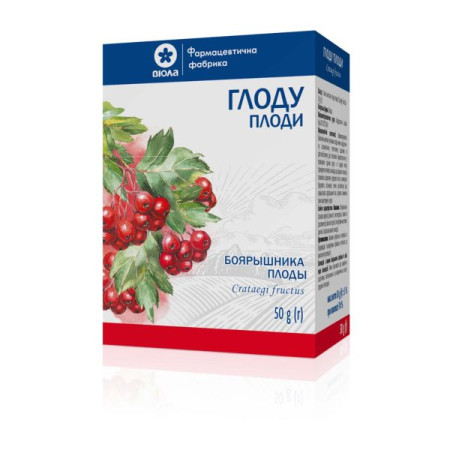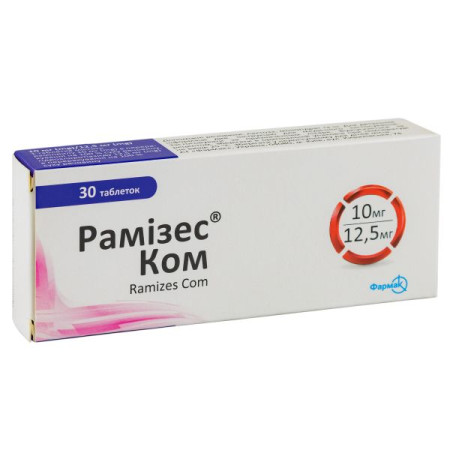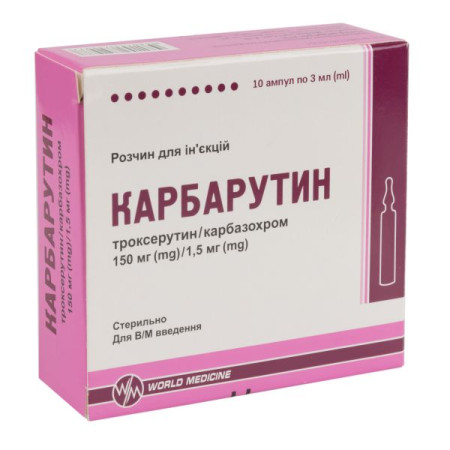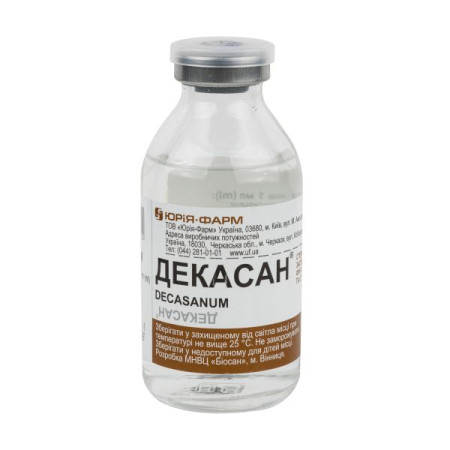Bimikan Eco eye drops solution 0.3 mg/ml dropper bottle 3 ml

Instructions for use Bimican Eco eye drops solution 0.3 mg/ml dropper bottle 3 ml
Composition
active ingredient: bimatoprost;
1 ml of solution contains 0.3 mg of bimatoprost;
Excipients: disodium phosphate dodecahydrate; citric acid, monohydrate; sodium chloride; hydrochloric acid, 10% solution; highly purified water.
Dosage form
Eye drops, solution.
Main physicochemical properties: colorless transparent solution.
Pharmacotherapeutic group
Drugs used in ophthalmology. Antiglaucoma drugs and miotics. Prostaglandin analogues. ATX code S01E E03.
Pharmacological properties
Pharmacodynamics
The mechanism of action by which bimatoprost reduces intraocular pressure in humans is to increase the outflow of intraocular fluid through the trabecular meshwork and to enhance outflow from the uveoscleral parts of the eye. The reduction in intraocular pressure begins approximately 4 hours after the first application. The maximum effect is achieved within approximately 8-12 hours. The duration of the effect is at least 24 hours.
Bimatoprost is a potent intraocular pressure-lowering agent belonging to the synthetic prostamide group, chemically related to prostaglandin F2α (PGF2α), and does not affect any of the known types of prostaglandin receptors. Bimatoprost selectively mimics the action of recently discovered biologically synthesized substances called prostamides. However, the prostamide receptor has not yet been structurally characterized.
Pharmacokinetics
In in vitro studies, bimatoprost penetrated well into the iris and sclera of humans. When instilled into the eye in adults, the systemic exposure to bimatoprost is very low. Systemic cumulation was not observed. When instillation of a solution of bimatoprost 1 drop into both eyes 1 time per day for 2 weeks, the maximum concentration (Cmax) of bimatoprost in the blood plasma was achieved within 10 minutes after application and decreased to the lowest level of determination (0.025 ng/ml) within 1.5 hours after application. The mean values of Cmax and area under the "concentration-time" curve (AUC0-24h) of bimatoprost were similar on the 7th and 14th day of application and were 0.08 ng/ml and 0.09 ng*h/ml, respectively, indicating that the equilibrium concentration of bimatoprost was achieved within the first week of topical application.
Bimatoprost is moderately distributed in tissues, and the volume of systemic distribution at steady state was 0.67 l/kg. Bimatoprost is predominantly found in plasma. Bimatoprost is approximately 88% bound to plasma proteins.
Bimatoprost is the major circulating substance in the blood after it enters the systemic circulation following instillation. Bimatoprost is then oxidized, N-deethylated, and glucuronidated to form various metabolites.
Bimatoprost is excreted primarily by the kidneys. Approximately 67% of the drug administered intravenously to healthy volunteers was excreted in the urine and 25% through the gastrointestinal tract. The elimination half-life (T1/2) of bimatoprost determined after intravenous administration was approximately 45 minutes, and the total clearance was 1.5 l/h/kg.
Indicators in elderly patients
When instillation of a 0.3 mg/ml bimatoprost solution in the form of eye drops 2 times a day, the average area under the concentration-time curve (AUC0-24h) in elderly patients (65 years and older) is 0.0634 ng*h/ml bimatoprost and is significantly higher than in young healthy adult volunteers - 0.0218 ng*h/ml. However, these data are not clinically significant because the systemic exposure in both elderly and young patients remained very low after instillation into the eyes. Cumulation of bimatoprost in the blood was not observed over time, and the safety profile of the drug was almost the same in elderly and young patients.
Indication
Reduction of elevated intraocular pressure (IOP) in adult patients with chronic open-angle glaucoma and intraocular hypertension (as monotherapy or as adjunctive therapy to beta-blockers).
Contraindication
Hypersensitivity to the active substance or excipients included in the preparation.
Interaction with other medicinal products and other types of interactions
Interaction studies have not been conducted.
No interaction is expected in humans because the systemic concentration of bimatoprost is extremely low (less than 0.2 ng/ml) in the body after application of a 0.3 mg/ml bimatoprost solution in the form of eye drops.
Preclinical studies have shown that bimatoprost is biotransformed in the body by any of numerous enzymes and metabolic pathways and does not affect hepatic enzymes involved in drug metabolism.
In clinical studies, bimatoprost eye drop solution was used concomitantly with several different ophthalmic beta-blockers without evidence of interaction.
Concomitant use of bimatoprost with other prostaglandin analogues may reduce the intraocular pressure-lowering effect in patients with glaucoma or increased intraocular pressure (see section "Special warnings and precautions for use").
Application features
Ophthalmology
Before starting treatment, patients should be informed about the possible increase in eyelashes, increased pigmentation of the eyelid skin and pigmentation of the iris, as these effects have been observed with bimatoprost. Some changes may be permanent and may be accompanied by differences in eye color if the drug is instilled into only one eye. Increased iris pigmentation is most likely to be permanent. The change in pigmentation occurs as a result of an increase in the melanin content of melanocytes, but it is not a consequence of an increase in their number. The long-term effect of iris hyperpigmentation is not known. Increased iris pigmentation occurs slowly and may be unnoticed for several months or years. Typically, brown pigmentation around the pupil spreads concentrically to the periphery of the iris, and the entire iris or parts of it become browner. Neither nevi nor freckles appearing on the iris are amenable to treatment.
After 3 months of treatment with bimatoprost 0.3 mg/ml, the incidence of pigmentation was 0.3%.
Bimatoprost should be used with caution in patients at risk of macular edema (with aphakia, pseudophakia with posterior lens capsule damage).
Rare cases of recurrent corneal infiltration or ocular infection have been reported with bimatoprost 0.3 mg/ml, solution in multidose containers. Bimatoprost should be used with caution in patients with a history of viral ocular infections (e.g. herpes simplex) or uveitis/iritis.
Bimatoprost has not been studied in patients with inflammatory eye diseases, neovascular, inflammatory, angle-closure, congenital glaucoma, or narrow-angle glaucoma.
Respiratory
Bimatoprost has not been studied in patients with impaired respiratory function. There are limited data on the use of bimatoprost in patients with a history of asthma or COPD. Exacerbations of asthma, dyspnea, and COPD have been reported in such patients in postmarketing studies. The frequency of these symptoms is unknown. Therefore, bimatoprost should be used with caution in patients with COPD, asthma, or impaired respiratory function.
Cardiovascular
Bimatoprost has not been studied in patients with heart block greater than first degree or in patients with uncontrolled congestive heart failure. Bimatoprost should be used with caution in patients with a predisposition to low heart rate or low blood pressure.
Skin
Hair growth is possible on areas of the skin where the drug constantly comes into contact with the skin. Bimatoprost should be used according to the instructions for medical use and the drug should not be allowed to run down the cheek or other areas of the skin.
Other information
Bimatoprost has not been studied in patients with moderate to severe renal or hepatic impairment. Therefore, caution should be exercised when treating these patients. In patients with a history of moderate hepatic impairment or abnormal alanine aminotransferase (ALT), aspartate aminotransferase (AST) and/or bilirubin, bimatoprost eye drops solution has not generally been associated with hepatic adverse reactions over 24 months.
The use of more than one dose of bimatoprost per day leads to a decrease in the effect of reducing elevated intraocular pressure in patients with glaucoma or in patients with elevated intraocular pressure. Patients using bimatoprost with other prostaglandin analogues should be under medical supervision and have their intraocular pressure checked (see section "Interaction with other medicinal products and other forms of interaction").
There have been reports of bacterial keratitis associated with the use of multiple-dose containers for topical ophthalmic medications. These containers were inadvertently contaminated by patients, most of whom had underlying eye disease. Patients with a tear in the ocular epithelial surface are at greater risk of developing bacterial keratitis.
The tip of the dropper bottle should not come into contact with the eye, surrounding surfaces, fingers, or other areas of skin to avoid eye damage and/or microbial contamination of the solution.
If more than one topical ophthalmic medication is used, a five-minute interval should be allowed between each instillation.
Bimatoprost has not been studied in patients who wear contact lenses. Contact lenses should be removed prior to instillation and may be reinserted 15 minutes after instillation.
Ability to influence reaction speed when driving vehicles or other mechanisms
Bimatoprost has a minor influence on the speed of reaction when driving or operating other mechanisms. As with other eye drops, if temporary blurred vision occurs after instillation, the patient should wait until vision clears before driving or operating other mechanisms.
Use during pregnancy or breastfeeding
There are no adequate data from the use of bimatoprost in pregnant women.
Animal studies have shown reproductive toxicity, which was toxic to the female when the drug was used in high doses.
Bimatoprost should not be used during pregnancy unless absolutely necessary.
It is not known whether bimatoprost is excreted in human milk. Animal studies have shown excretion of bimatoprost in human milk. A decision on whether to continue/discontinue breast-feeding or to continue/discontinue therapy with bimatoprost should be made taking into account the benefit of breast-feeding for the child and the benefit of therapy for the woman.
There are no data on the effect of bimatoprost on fertility.
Method of administration and doses
Adults: Instill 1 drop into the affected eye(s) once daily, in the evening.
The dose should not exceed 1 injection once a day, as more frequent use of the drug may reduce the effect of reducing elevated intraocular pressure.
Method of application
For topical use in ophthalmology only.
When using nasolacrimal occlusion or closing the eyelids for 2 minutes, systemic absorption is reduced. This may reduce systemic adverse reactions and enhance local activity of the drug.
If more than one topical ophthalmic medication is used, a five-minute interval should be allowed between each instillation. Eye ointments should be used last.
Before using eye drops:
Before using the medicine for the first time, you should first practice using the dropper bottle by slowly pressing it to apply one drop into the eye without touching the eye.
If you are confident that you can instill one drop, choose the position that you find most comfortable (you can sit, lie on your back, or stand in front of a mirror).
Instructions for use:
Before using the drug, wash your hands thoroughly. If the packaging or bottle is damaged, do not use the drug. Make sure that the sealing ring on the cap is not damaged. Before first use, unscrew the cap; slight resistance may be felt when breaking the warranty ring. If the warranty ring is damaged during the first opening, it should be removed and discarded to avoid injury. Tilt your head back and gently pull the lower eyelid to create a space between the eyeball and the eyelid. Avoid contact between the tip of the dropper and the eye, eyelids or fingers. Gently press the walls of the bottle and let the drop fall into your eye. Please note that there may be a delay of several seconds between squeezing and falling out. Do not press too hard. If you do not know how to instill the drops, ask your doctor, pharmacist or nurse. Then press the nasolacrimal canal for about 2 minutes (by pressing your finger on the corner of the eye near the nose) and close your eyes and keep them closed during this time. This ensures that the drop is absorbed by the eye and that the amount of medicine that passes through the tear duct to the nose is likely to be reduced. Do not touch the tip of the dropper to the surface of the eye or surrounding tissue. If your doctor has prescribed the medicine to be used in the conjunctival sac of the other eye, you must repeat steps 5-6. After use and before re-use, the bottle should be shaken once in a downward direction without touching the tip of the dropper, in order to remove any remaining solution in the tip. This is necessary to ensure the delivery of the next drops. After instillation, screw the cap on the bottle.
Children
The efficacy and safety of Bimikan® Eco in children have not been studied, therefore the drug is not recommended for use in children (under 18 years of age).
Overdose
No cases of overdose with Bimikan® Eco have been reported. When applied topically in the form of eye drops, overdose is unlikely.
In case of overdose, supportive and symptomatic therapy is required.
Adverse reactions
From the nervous system: headache, dizziness.
Cardiovascular system: arterial hypertension.
On the part of the digestive tract: nausea.
Skin and subcutaneous tissue disorders: skin hyperpigmentation (periorbital area), skin depigmentation (periorbital area), hypertrichosis (abnormal hair growth), redness of the periorbital area, dry skin, crusting of the eyelid margin, itching.
Respiratory and mediastinal disorders: asthma, exacerbation of bronchial asthma, exacerbation of COPD and dyspnea.
Immune system disorders: Hypersensitivity reactions, including signs and symptoms of ocular allergy and allergic dermatitis.
General disorders and administration site conditions: asthenia, irritation at the instillation site.
Investigations: abnormal liver function tests.
Expiration date
2 years. Do not use the product after the expiry date stated on the packaging. Shelf life after first opening is 90 days.
Storage conditions
Store in original packaging. No special storage conditions required.
Keep out of reach of children.
Packaging
3 ml of the drug in a 3 ml polyethylene dropper bottle with a cap with a warranty ring. 1 bottle in a cardboard box.
Vacation category
According to the recipe.
Producer
Warsaw Pharmaceutical Works Polfa SA Poland.
Location of the manufacturer and its business address
22/24 Karolkowa Str., 01-207 Warsaw, Poland.
There are no reviews for this product.
There are no reviews for this product, be the first to leave your review.
No questions about this product, be the first and ask your question.

















